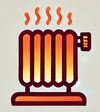A seasonal maintenance schedule is essential for keeping your home in top shape throughout the year. By following a structured plan, you can prevent costly repairs and ensure your systems run efficiently.
As the seasons change, different tasks become necessary. From inspecting your HVAC system before winter to cleaning gutters in the fall, staying proactive can save you time and money. Embracing a seasonal approach not only protects your investment but also enhances your comfort and safety at home.
Importance Of A Seasonal Maintenance Schedule
A seasonal maintenance schedule plays a vital role in protecting your home. Following a structured plan helps prevent costly repairs while ensuring your systems run smoothly. Different seasons bring specific tasks, making it essential to stay proactive.
Benefits For Homeowners
A seasonal maintenance schedule offers several key benefits for homeowners. It enhances safety, saves money, and extends the life of your home’s systems. Regular maintenance checks mean you catch small issues before they turn into big problems.
Cost Efficiency
Cost efficiency stands out as one of the primary advantages of a maintenance schedule. Routine maintenance saves you money over time. For instance, fixing a small roof leak can stop water damage and mold growth. This simple act prevents expensive repairs down the line.
Also, maintaining your home supports warranties and insurance policies. Insurance companies may deny coverage if they see a lack of maintenance. Regular tasks validate warranties and keep you protected. Investing in seasonal upkeep means peace of mind and financial savings.
Creating A Seasonal Maintenance Schedule
Creating a seasonal maintenance schedule helps you stay organized and proactive in maintaining your home. You can enhance safety and efficiency through regular upkeep.
Seasonal Tasks Overview
Each season brings specific tasks. Completing these tasks prevents minor issues from becoming major repairs.
- Spring: Inspect and repair your roof. Clean gutters and downspouts. De-winterize your irrigation system. Prune trees and shrubs. Inspect outdoor furniture.
- Summer: Check your air conditioning system for efficiency. Clean refrigerator coils to improve performance. Test smoke and carbon monoxide detectors.
- Fall: Winterize your irrigation system. Clean gutters and check for any roof damage. Inspect heating systems before the colder months.
- Winter: Inspect insulation and seal drafts. Keep an eye on plumbing to prevent freezing. Test emergency heating sources and stock up on supplies.
Recommended Timeline
Following a timeline ensures timely completion of tasks.
| Season | Tasks | Timing |
|---|---|---|
| Spring | Roof inspection and repair | March – April |
| Gutter cleaning and maintenance | March – April | |
| De-winterizing irrigation systems | March | |
| Pruning trees and shrubs | April | |
| Furniture check and cleaning | April | |
| Summer | HVAC system efficiency check | June |
| Refrigerator coil cleaning | June – July | |
| Smoke detector testing | July | |
| Fall | Irrigation system winterization | October |
| Gutter cleaning and roof inspection | October – November | |
| Heating system inspection | November | |
| Winter | Insulation inspection | January |
| Plumbing checks for freezing | January | |
| Emergency heating source testing | February |
A clear timeline keeps everything on track. Adjust as necessary based on local weather patterns or specific needs. Following these steps leads to a more secure and efficient home.
Monthly Maintenance Checklist
Staying on top of monthly maintenance tasks keeps your home running smoothly. Here are essential tasks to tackle throughout the year.
Spring Maintenance Tasks
- Safety Devices: Test smoke detectors and carbon monoxide detectors. Replace batteries as needed. Ensure they function properly to keep your family safe.
- Water and Air Systems: Inspect water hoses, outdoor faucets, and drains. Look for leaks to avoid costly repairs later.
- HVAC Filters: Check and replace heating, ventilation, and air conditioning (HVAC) filters. This helps maintain air quality and system efficiency.
Summer Maintenance Tasks
- Drains: Snake and clean all drains, including tubs, showers, and sinks. This prevents clogs and expensive plumbing issues.
- Garbage Disposal: Clean your garbage disposal by grinding ice cubes and using vinegar or lemon for sanitizing. This will help eliminate odors and keep it functioning well.
Fall Maintenance Tasks
- Utility Bills: Review your utility bills each month. Watch for spikes in usage that indicate possible system issues. Address them promptly to avoid larger costs.
- HVAC System: Schedule a professional inspection to ensure your heating system operates efficiently. This step helps prevent breakdowns during the cold months.
- Insulation Checks: Inspect insulation in attics and basements. Confirm it’s adequate to prevent heat loss, which leads to higher energy bills.
Following this checklist each month keeps your home in top shape. Addressing these tasks on time prevents minor issues from becoming major problems.
Tools And Resources For Maintenance
Using the right tools and resources simplifies your seasonal maintenance tasks. They help you save time and complete jobs effectively.
Essential Tools
- Ladder: Use a sturdy ladder for roof and gutter inspections. Ensure it reaches high areas safely.
- Basic Hand Tools: Keep a set of screwdrivers, pliers, and wrenches handy for small repairs. They come in useful for quick fixes.
- Power Washer: Use a power washer to clean driveways, patios, and siding. This tool removes dirt and grime effectively.
- Leaf Blower: Use a leaf blower to clear leaves from walkways and gutters. It speeds up yard cleanup during fall.
- Safety Gear: Equip yourself with gloves, goggles, and a helmet. They protect you while working at height or handling tools.
- Home Maintenance Apps: Download apps like HomeZada or TaskRabbit to manage tasks and set reminders. They help keep track of seasonal maintenance.
- Weather Apps: Use weather apps to check forecasts before scheduling outdoor tasks. This prevents abrupt changes in plans.
- Repair Guides: Access online resources like YouTube for repair tutorials. These guides provide visual instructions for DIY projects.
- Inventory Management: Use inventory apps to track tools and supplies. This ensures you always know what you have on hand.
Focusing on these tools and resources makes seasonal home maintenance more manageable. You’ll find that the right equipment and technology can save you time and effort.
Conclusion
Staying on top of a seasonal maintenance schedule is crucial for protecting your home and saving money. By tackling specific tasks throughout the year, you can prevent minor issues from turning into costly repairs. This proactive approach not only enhances the safety and efficiency of your home but also extends the lifespan of your systems.
Utilizing the right tools and resources makes these tasks easier and more manageable. Whether you’re using apps to keep track of your schedule or investing in essential equipment, every effort counts. Embrace the routine of seasonal maintenance, and you’ll enjoy a secure, efficient home that stands the test of time.








